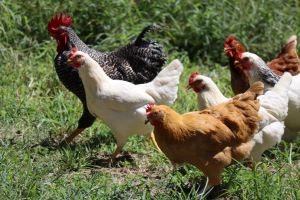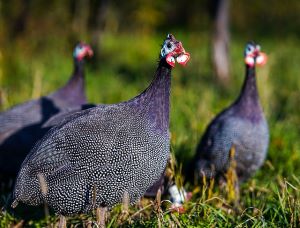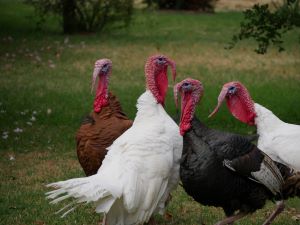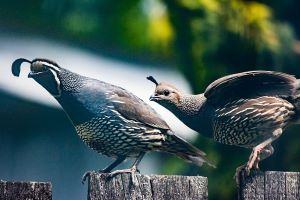
How to Feed Pet Chickens and Other Poultry
By: Plain Direct
March 2nd 2023, 12:00:00 am
Raising poultry is a rewarding hobby that can also feed your family! Backyard poultry control pests, reduce weeds, and provide you with farm-fresh eggs daily. They’ll also develop their own personalities, making them fun family pets. If you decide to raise poultry, what will you feed them? As it turns out, each bird has their own distinct diet to follow - there’s no one-size-fits-all. Here’s our guide on how to feed your farm birds.

Chickens
Chickens are foragers that hunt and eat insects, lizards, frogs, worms, slugs, mice, fruit, vegetables, and seeds. You should allow them space to roam and forage. Fruits and veggies they’ll eat include vegetable peels, bananas, apples, berries, carrots, bok choy, silver beet, spinach, cabbage, or broccoli. Your chickens’ protein needs will vary depending on their ages and if they’re being raised for eggs or meat.
You will likely need to supplement their grazing with good-quality poultry feed. This is made of a mix of grains, grit, and vitamins. Chickens need access to grit to aid in eating, digestion, and quality egg production. Grit makes up for chickens’ lack of teeth, helping them to break down their food. It’s important to have feed available to your chickens at all times.

Guinea Fowl
Grown guineas get most of their nutrients from foraging bugs and vegetation. These birds are great for controlling insect populations and scaring pests away with their loud behavior. They’ve even been known to eat mice, rats, crickets, grasshoppers, and ticks. You can also leave them leafy greens, like alfalfa, to pick at.
As with chickens, guineas will need to be fed grit to aid in their digestion. They can receive this in a mash or crumble feed but not pellets. They also require a higher-protein feed than what’s typical for chickens. It’s a good idea to limit the amount of feed your guineas are fed to encourage more foraging.

Turkeys
Turkeys need high-protein food that is specifically made for turkeys with enough protein to match how quickly they grow. This will be a starter feed they’ll eat from when they hatch to when they’re 6 weeks old. No other bird starter food should be fed to turkeys. Likewise, turkeys need drinking water that is at a cool temperature and is neither hot nor cold. Just like chickens, the protein percentage in your turkey’s food will change throughout its lifetime.
As they get older, their protein needs are lower. You should go from about 20% in their youth to 12-14% in adulthood. Pelleted feed is best for turkeys who are known to eat fast and gorge themselves. Like with the other birds, grit is needed to help break down food, however, turkeys need larger-sized grit. Otherwise, it could pass through the gizzard without breaking anything down.

Quail
After hatching, give your baby quail a 30% protein starter feed. After they’ve reached 6 to 8 weeks old, switch them to a starter feed that is for game birds. Quail are also foragers and will eat things like grains, insects, worms, seeds, berries, and nuts, but 80% of their adult diet still comes from grains.
Depending on your intended use of quails, their diet slightly changes. If you are raising quail for meat, go with a grower feed or finisher feed with higher protein. If you are raising quail for eggs, choose a developer feed or layer feed with higher grain content. Your intended use also determines how quails are fed. Quails bred for sport are fed by scattering on the open ground, teaching them to forage in the wild. Quails not bred for sport are fed by feeders in their coops.
Start Your Own Poultry Farm Today!
If raising poultry is a hobby you’re interested in, check out the sellers on Plain Direct who offer a variety of birds to purchase. Don’t forget you’ll also need a chicken coop, so check out the farm buildings available from sellers, too!
Share:
Tags:
No tags yet.